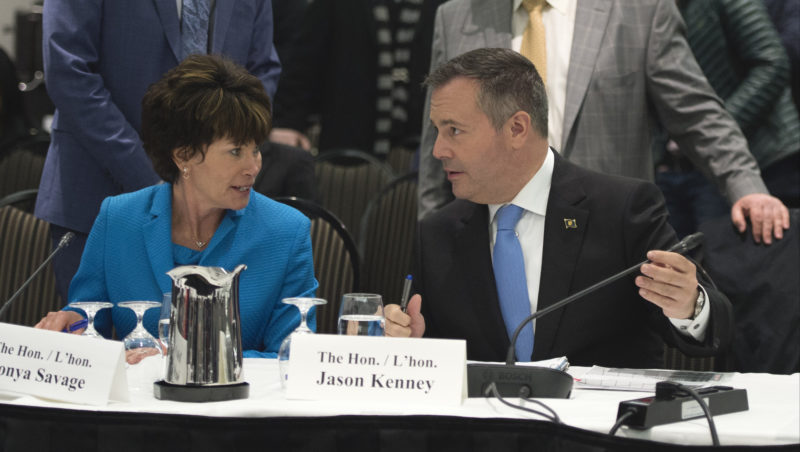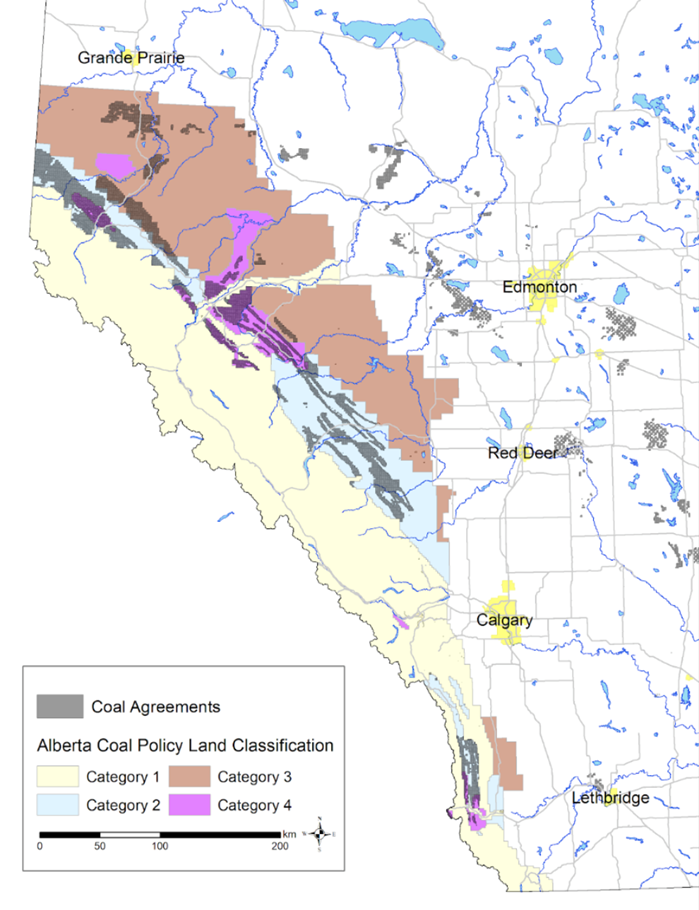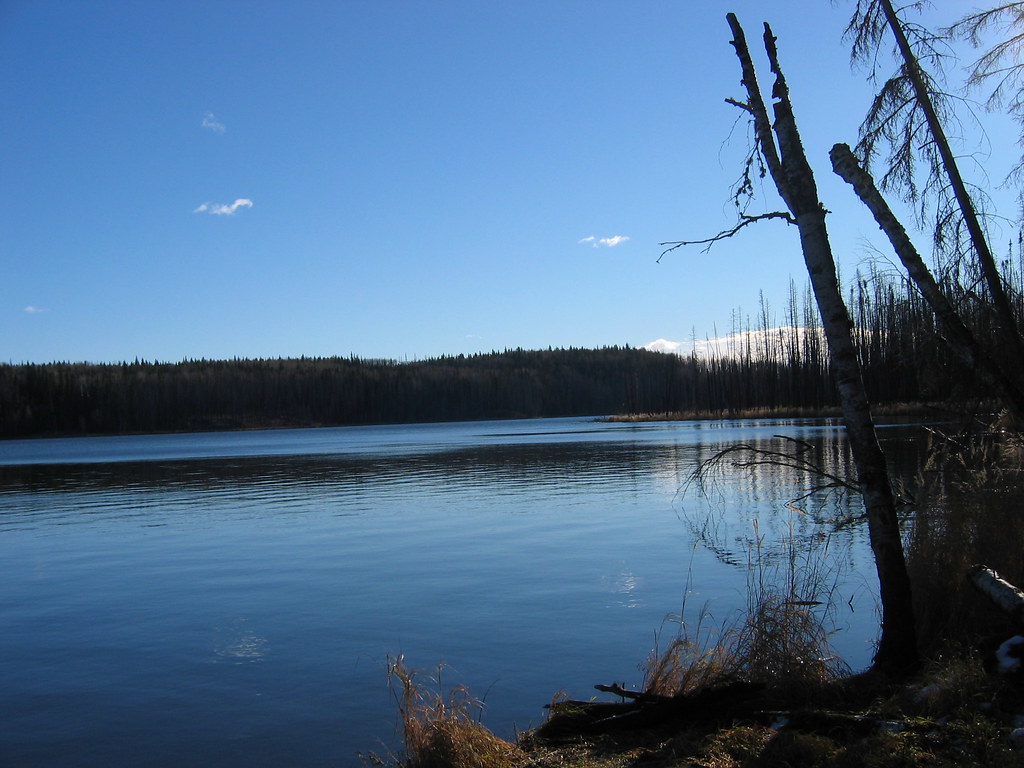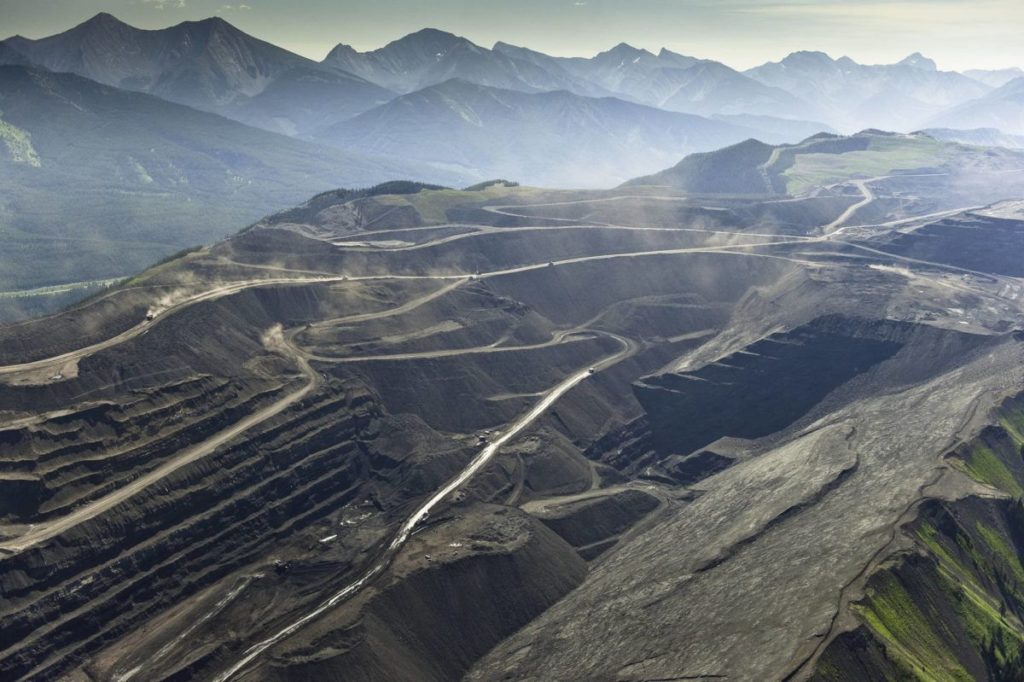
Ontario’s public service heads back to the office, meaning more traffic and emissions
For 15 years and counting, my commute from Mississauga to Toronto has been mired by...
Amid a global economic slowdown spurred by the spread of COVID-19, Alberta’s government is paving the way for a resurgence of coal mining in the province, a move some observers say threatens sensitive ecosystems that, until June, had been protected for decades.
This spring, the United Conservative Party government rolled back protections that had restricted exploration and prevented open-pit coal mining across parts of the Rocky Mountains and Foothills since 1976.
The decision, which was announced in mid-May and came into force June 1, was framed as part of Alberta’s economic recovery. “Rescinding the outdated coal policy in favour of modern oversight will help attract new investment for an important industry and protect jobs for Albertans,” Energy Minister Sonya Savage said in a statement at the time.
The provincial economy was hit hard this year, first by the oil price war between Russia and Saudia Arabia, then by an unprecedented plunge in demand for oil due to the pandemic. And as restaurants, movie theatres, hair salons and many other businesses closed their doors to stem the spread of the novel coronavirus, unemployment shot up. In June, the province’s unemployment rate was 15.5 per cent.
“As we strengthen our focus on economic recovery and revitalization, we will continue to make common-sense decisions to create certainty and flexibility for industry, while ensuring sensitive lands are protected for Albertans to continue to enjoy,” Savage said in May.
The concern for some Albertans, though, is that the government’s open-for-business stance on coal threatens to destroy a landscape that is important to First Nations and serves as critical habitat for grizzlies, caribou and the Alberta population of westslope cutthroat trout, listed as threatened under the federal Species At Risk Act.
“It’s a backwards move,” said Marlene Poitras, the Assembly of First Nations regional chief for Alberta. The decision to rescind protections was made without adequately consulting with First Nations, she said.
Shaun Fluker, an associate law professor at the University of Calgary, said “the timing is very unfortunate and seems calculated to implement a change like this at a time or a moment when negative feedback or criticism or resistance would be difficult to mount.”
“The government certainly could have waited to make this announcement at a time when more public dialogue was possible and feasible,” he said.
“You could say they used the public health emergency as a cloak to defend against any criticism that might attract.”
Here’s what you may have missed about Alberta’s mid-pandemic bid for coal.

Energy Minister Sonya Savage has said rescinding the coal policy will ‘help attract new investment’ for the mining industry. Photo: Government of Alberta / Flickr
In 1976, Alberta released a wide-ranging coal development policy that covered land use planning, royalties, labour requirements, landowner rights and environmental protections.
Many of these provisions were either not enforced or had previously been replaced with updated measures. Until June 1, the land classification system, which divided the province into four land categories that allowed varying levels of coal exploration and development, was the only portion of the policy that remained in place.
Category 1 lands — where coal leasing, exploration and development were not permitted — will continue to be protected.
Previously, surface mining was banned on category 2 lands, which included parts of the Rocky Mountains and the Foothills, and exploration and underground development was limited. Exploration was allowed on lands listed as category 3 under the normal process but development in these areas was restricted. Now, restrictions on category 2 and 3 lands have been removed.

Companies with coal agreements on category 2 and 3 lands no longer face development restrictions that had been in place under the 1976 policy. Map: Canadian Parks and Wilderness Society
According to the Alberta government, the intent of the 1976 coal policy “was to ensure that there were appropriate regulatory and environmental protection measures in place before new coal projects were authorized.”
While the province says the coal policy is replaced by “modern regulatory processes, integrated planning and land use policies,” some experts are quick to note that regional land use plans have not yet been completed for the entire area previously protected by the coal policy.
The 1976 document “was an overarching policy that gave direction to the regulator and specifically said certain activities are acceptable in this area, but they’re not acceptable in other areas,” explained Brenda Heelan Powell, staff counsel at the Environmental Law Centre.
“That gives a signal to the regulator on cumulative effects and appropriate development,” she said. “And while that could happen through the regional planning, it’s not complete for that entire area.”
A regional plan has been completed for the South Saskatchewan region in southern Alberta, but the planning process is ongoing in the North Saskatchewan region, which includes parts of the Rockies and Foothills, and has yet to begin in other areas.
In the absence of an overarching land-use policy that guards against the cumulative effects of resource development, coal projects are likely to be assessed on a project by project basis, Heelan Powell said.
While Poitras said the government spoke with some Treaty 7 First Nations that would be directly impacted by coal mining, she said others, including some Treaty 6 nations whose traditional lands are affected by the decision, were not consulted.
“We have three numbered treaties in Alberta — 6, 7 and 8 — and any time there’s any impacts to those treaties, the government has a duty to consult,” she said.
The government’s decision to open previously protected lands to coal development has the potential to cause lasting harm, Poitras said.
“We’re stewards of the land and when issues like that occur, where there’s environmental damage that is going to occur…that is a concern to many First Nations.”
“The mountains are sacred to our people for traditional ceremonies and gathering medicines that are harder to get in some other areas,” she said.

Crow Lake Provincial Park in northern Alberta is one of several parks slated for closure by the UCP government. Photo: Alberta Parks
Earlier this year, Premier Jason Kenney’s government announced plans to transfer the management of 164 sites in the parks system to third parties. The CBC reported that roughly a third of those sites are located on lands where mining restrictions have been lifted.
(Alberta also said it would fully or partially shutter 20 provincial parks, but postponed closing 17 of them to ensure adequate space for camping during the pandemic.)
While Fluker said the decision to close or transfer management of provincial parks and recreation sites was probably aimed at reducing government expenses, other measures are “really about opening up public lands to more economic development, which in Alberta tends to be natural resources development.”
Katie Morrison, the conservation director of the Canadian Parks and Wilderness Society’s Southern Alberta chapter, noted a few of these recreational areas are surrounded by coal leases.
“It shows the risk that these places are under once their protections are removed, but I think it’s also quite indicative of how this government views the value of public lands,” she said.
“They see them as commodities for resource extraction.”
Morrison said a lot of the areas previously protected under category 2 of the coal policy are important headwaters that provide drinking water to millions of Albertans downstream.
These areas are also important habitat for grizzly bears, elk, caribou and, significantly, the threatened westslope cutthroat trout (WSCT).
The southwest corner of the province is “really the last stronghold for that species,” Fluker said.
In a recent paper in the Public Land and Resources Law Review, Fluker and his co-author David Mayhood point to overexploitation, habitat destruction and hybridization with introduced species such as rainbow trout as causes for the decline of westslope cutthroat trout in Alberta.
“The story told here about the decline of the Alberta population of WSCT is certainly not an isolated one. Habitat loss is widely understood as the primary cause for the extinction crisis sweeping the planet,” the authors write.
“What is noteworthy about the ongoing decline of the Alberta population of WSCT is that losses continue despite the population falling under the protection of a threatened species legal framework.”
Opening previously protected areas to open-pit coal mining could further strain this already threatened species.
“It really undermines the whole point of the Species At Risk Act if you have a threatened species with very little remaining known critical habitat and you approve a coal mine that basically wipes out some of that habitat and potentially pollutes more of it downstream,” said Fluker, who has been working with a public interest law clinic at the University of Calgary to push for more aggressive protections for cutthroat trout for a number of years.
New coal mines emerging in Alberta as a result of the government’s recent policy change could shape up to be a high-profile battleground between industry and threatened species, Fluker said.
As well as providing key habitat for fish and wildlife, Morrison noted the region is also used for recreation and ranching.
“Once a mine is built, that is not an area that the public can access, it’s not an area that’s used for grazing or other uses,” she said.
“These mines are massive, mountaintop removal mines,” she said, noting there are concerns not only about the quantity of water used, but also risks of contamination.
In B.C., there have been long-standing concerns about selenium pollution downstream of Teck Resources’ Elk Valley coal mines.
“We can learn from the Elk Valley and other places that went ahead with massive developments and the problems that they’re dealing with now and try to avoid that scenario for ourselves,” she said.
Unique B.C. trout population suffers 93 per cent crash downstream of Teck’s Elk Valley coal mines
Alberta is already the second largest producer of coal in Canada, and last year 67 per cent of coal produced in the province was subbituminous coal, a lower grade used for electricity generation. According to the Alberta Energy Regulator, subbituminous coal production is expected to decline by more than 90 per cent between 2020 and 2029 with the phase-out of coal-fired electricity.
The new areas available for open-pit coal mining open a window to additional production of metallurgical coal, which is used to make steel.
“Just across the border, the province of British Columbia has a successful metallurgical coal industry and the demand for high-quality steelmaking coal will continue to grow,” Kavi Bal, press secretary to Alberta Energy Minister Sonya Savage, said in a statement to The Narwhal.

Teck’s Elk Valley metallurgical coal mining operations have come under criticism for their impacts on the environment. Photo: Garth Lenz
A new metallurgical coal mine, the Grassy Mountain project proposed near the Crowsnest Pass in Alberta, is currently going through a joint provincial-federal environmental review. If built, it could more than double production of steelmaking coal in Alberta.
In the areas where restrictions on the issuance of coal leases have recently been lifted, Alberta Energy is offering a first right of refusal to companies that have existing applications for coal rights.
The Coal Association of Canada did not respond to The Narwhal’s request for comment. But in May, association president Robin Campbell told CTV there were already multiple companies considering coal mines in the Foothills and that each new mine could employ between 300 and 350 people.
If Grassy Mountain is approved, Morrison said other projects in the exploration phase may decide to move forward with their own mine applications.
It “would give an indication that governments think that is an appropriate use of the landscape,” she said.
Instead, before any new mines are approved Morrison said she wants the province to undertake a detailed land-use planning process to determine whether those landscapes could handle resource development.
In the meantime, one of the province’s existing mines, which exports thermal coal for electricity generation elsewhere, could face a new hurdle in its efforts to expand. The federal government recently said it is reconsidering its decision from last year to exempt the proposed Vista mine expansion, near Hinton, from a federal impact assessment.
Environment and Climate Change Minister Jonathan Wilkinson is expected to make a decision by July 30 on whether to proceed with a federal assessment, Moira Kelly, a spokesperson for the minister, said in a statement to The Narwhal.
“Our government has also launched a strategic assessment on thermal coal to better understand the potential impact of thermal coal mining activity, to ensure effects within federal jurisdiction — especially related to climate change — are fully considered in the federal impact assessment process,” she said.
Enbridge Gas will face Waterloo Region in a hearing before the Ontario Energy Board to renew an agreement that would allow the company to continue...
Continue reading
For 15 years and counting, my commute from Mississauga to Toronto has been mired by...

For our last weekly newsletter of the year, we wanted to share some highlights from...

The fossil fuel giant says its agreement to build pipelines without paying for the right...